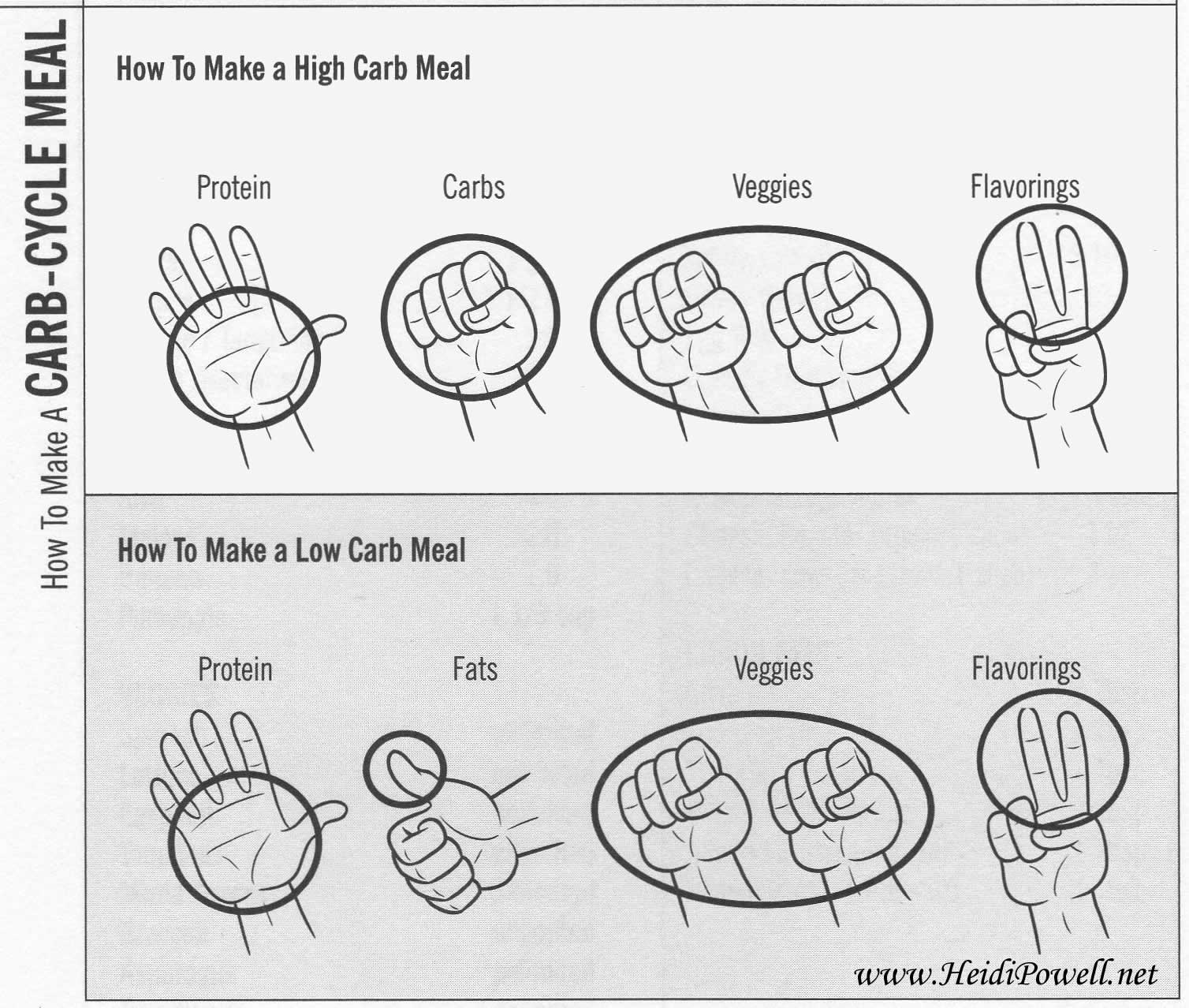You’ll find them in 99.99% of everything you eat and drink. They can be your greatest friends or your worst enemies. Eat fewer than you need and you lose weight. Eat more than you need and you gain weight. Yes, it is that simple.
Since calories affect everyone everyday, it?s important to understand them: what they are, what they do, and how to make them work for you instead of against you.
Some basic facts about calories:
- They represent the amount of energy in the foods you eat and drink.
- They are not partial to certain types of foods. A calorie from a carrot is the same as a calorie from a doughnut (although the carrot calorie is much healthier, of course!).
- Different types of foods are automatically higher in calories. Take 1 gram each of protein, carbohydrate, and fat. The grams of protein and carbohydrate each contain 4 calories, while the gram of fat has 9. Yes, that?s more than double the calories gram per gram. Yikes!
- One pound of fat = 3500 calories.
So how do you get calories on your side in your weight loss battle? First of all you need to know your Basal Metabolic Rate (BMR), which is the number of calories your body needs every day just to function properly?to breathe, circulate blood, adjust hormone levels, digest food, grow and repair cells, and so on. While there are several formulas to figure out your BMR, here?s an easy one:
Current body weight x 12 = BMR
150 pounds x 12 = 1,800 calories (BMR)
Simply put, if you eat more than your daily BMR, your body stores those extra calories as fat and you gain weight. If you stay below your BMR, you create a calorie deficit and you lose weight. One caution: women should never eat less than 1,200 calories a day, and men should never go below 1,500. Consuming too few calories sends your body into a protective starvation mode and slows down your metabolism, and a slow metabolism doesn?t burn calories as fast and can cause other problems as well.
There are three basic ways to create a calorie deficit:
- Eat fewer calories than your BMR.
- Exercise, because it burns calories and builds muscle, and bigger muscles burn even more calories!
- A combination of #1 and #2?the best option by far.
Here?s how this works:
- If you create a daily 500-calorie deficit, you?ll lose 1 pound a week.
- If you create a daily 1,000-calorie deficit, you?ll lose 2 pounds a week (remember that cutting too many calories from your diet is not good).
I know, I hear you: ?But Heidi, I don?t like to count calories.? You?re not alone. Counting calories is so not fun. However, it?s really important to know what you?re taking into your body every time you open your mouth. Studies show that most people think they?ve eaten 20% fewer calories than they actually have, so trying to estimate your calorie intake is a recipe for disaster.
Until you have an opportunity to weigh and measure your food to figure what your “correct” portions look like, this simple graphic shows a safe and easy way to choose appropriate portion sizes without measuring cups or a scale. This should also help keep you from creating a calorie surplus:
Some final words of advice:
- It?s important to recalculate your BMR as you lose weight.
- Some calorie tracking apps add the calories you burn from exercise into your daily to-eat total, making it look like you can eat more than you actually can, and if you do eat all those calories, you won?t have a calorie deficit at the end of the day. Instead, eat the number of calories in your daily eating plan, and subtract the calories you burned to see your deficit. Remember: one pound of fat = 3500 calories, so work to eventually create a 3500 calorie deficit.
- You can eat calories much faster than you can burn them, so don?t use those exercise-burned calories as permission to eat more food??I burned 500 calories this morning, so I can eat this cupcake.? So not a good way to do it!
To learn more about our preferred and proven eating and exercise plan?Carb Cycling?check out our book, Choose More, Lose More for Life.




205 Responses
Love the post hoping to use this to help my father out a question for me is what is flavoring? Thanks again for all the amazing help!
In carb cycling, flavorings are small amounts of things like butter spray, chili sauce, hummus, low fat dressings, marinara sauce, salsa, and others that equate to between 30-50 calories per serving.
I have a question about calorie intake for breastfeeding mothers – is there a modification to this plan for someone who is breastfeeding? Should I just add 500 calories onto this plan? And if so, what food categories should I add them to?
Great questions! Check out this post for some great info on carb cycling and breastfeeding: https://heidipowell.net/2275/q-a-carb-cycling-while-prego/. And congrats on the new baby! 🙂
Can you re-explain this comment- I’m not understanding. Especially how a fitbit would fit into this. thanks!
Some calorie tracking apps add the calories you burn from exercise into your daily to-eat total, making it look like you can eat more than you actually can, and if you do eat all those calories, you won?t have a calorie deficit at the end of the day. Instead, eat the number of calories in your daily eating plan, and subtract the calories you burned to see your deficit.
Let’s see if I can help you understand this better. Let’s say you eat breakfast and lunch before you workout for a total of 600 calories. Then you exercise and burn another 300 calories. Many calorie tracking/fitness apps would subtract those burned calories from your 600 calories-already-eaten total, making it look like you’ve only eaten 300 calories for the day. And if your daily calorie goal is 1200, for example, it now looks like you can eat 900 more calories instead of the 600 left pre-workout to meet that 1200 calorie goal. If you eat those 300 calories you burned based on what your app says, you’ve just eaten your calorie deficit. It’s much better to eat the calories in your daily calorie goal (1200 calories in this example), and know that the 300 calories you burned are part of your calorie deficit for the day. And it takes a calorie deficit of 3500 calories, over a period of days, to lose one pound.
Hi Heidi,
I am 5.5 about 178 Lbs i am average size but all my weight is in my Belly & it is impossible to get rid of the belly fat is all from my drinking in my earlier days
My question to you is i started counting calories & exercising about 4-5 days a Week i have a trainer 3 days a week i have been doing this for almost 1 year & so far i have lost 18 lbs really slow metabolism
i have the myfitness app on my phone & i add everything food, drinks & exercise everyday i dont drink soda only water/crystal light green tea i have my fitness plan intake set at 1300 calories a day is that to little for me i dont eat alott i get full really fast & most of the times dont have snacks in between meals so how can i loose more weight in the Belly specially am i doing the right thing??? PLEASE HELP ME I LOOOOVE WHAT YOU & CHRIS YOUR MY INSPIRATION & I LOOOVE TO WATCH YOUR EWL SHOW
Hi Linda: You might be interested in checking out Chris and Heidi’s carb cycling program in their book, “Choose More, Lose More for Life.” It’s a complete nutrition and exercise program, and it’s the same one they use on the show. It will teach you everything you need to know and do to reach your goals!
Linda,
I was in the same boat as you! Thought I was doing everything right and not getting anywhere. But I was actually gaining weight throughout the year. I bought their book and I am on day 10 and haven’t felt better! I started out with the Classic Cycle and have just moved to the Turbo Cycle just because I feel a lot better on my low carb days. I am just now starting to see a small change in my belly area. It feels flatter. The only thing I need to do is their 9 min exercise in the morning. I suffer from Tachycardia and exercise first thing in the morning my heart rate gives me fits. Just thought I was share my experience so far 🙂 Carb cycling is the way to go!
Hi Heidi, tank you for the wonderfull work that you make!
And I would like to know, does the formule work for thinnier person? My weight is aproximatively 125 ponds (BMI 19.5) and im an active girl (i run between 30 and 40 km/week ) but according to this formule if I eat more than 1500 cal/day I gonna gain some weight. Right? (And sorry for my english, its ma second language)
This formula is for the number of calories your body needs every day just to function. It doesn’t take into account any moving you’ll do, so you should be fine, especially since you’re running so much. Any movement you do (whether working out or just doing your normal daily activities) will be calories that you’ll burn and so they’ll be subtracted from your daily calorie intake. Hope that helps! 🙂
Question:
So, my current weight is 305 pounds, meaning, my current BMR is 3660.
Could I really lose almost 2 pounds a week by eating 3000 calories?
Also, if I burn 1000 calories a day, does this mean I could eat 3660 calories a day and still expect to lost two pounds?
Finally, if my goal weight is 210 pounds, which would make my BMR 2520, could I seriously eat that many calories a day, without exercise, and still expect to get down to that weight?
Question #1: Any calories you cut (don’t eat) and burn through exercise add to your daily calorie deficit, which leads to lost pounds. So if you eat 3000 a day, that’s a deficit of 660/day. Over the course of a week that’s 4620 calories, and there are 3500 calories in a pound. And if you exercise and burn 400 calories a day for 6 of those days, you’ll lose 2 pounds during the week. Question #2: If you eat 3660 calories/day and burn 1000 (that’s a lot to burn per day!), you should lose almost 2 pounds a week. Question #3: This one’s a bit trickier to answer. One of the bonuses of exercising regularly, besides all the health and weight loss benefits, is that as you build more muscle, those muscles burn more calories every day. If you stop exercising, that muscle will somewhat turn to fat, and won’t burn as many calories. If you’re interested, I’d suggest checking into Chris and Heidi’s carb cycling program in their book, “Choose More, Lose More for Life.” It’s the same program they use on the show, and it will teach you everything you need to know and do to lose weight. You simply choose a carb cycle, and everything’s outlined for you! Here are the nutrition basics: https://heidipowell.net/2713/carb-cycling-101/.
Thank you for posting this!! I recently started running (C25K) and counting calories (myfitnesspal). The first week I lost 3 pounds!! So disappointing when I barely lost .5 pounds the next week :/ I am keeping it up but not sure why that happened. I did just about the same thing in week #2 as I did in week #1. ?? Anyway I LOVE what you and Chris do and I appreciate the motivation and advice! Thanks!
Hi Heidi,
I’m a little confused. Based on what you’re saying here, theoretically you could plug in your “goal weight” and eat that and eventually you’d end up at said goal weight (because if your goal weight is any less than your current weight, you’d end up in a deficit).
So if my goal weight was, say… 115lbs (I’m 5’3″), I should be able to eat 1380 calories every single day for the rest of my life and stay at 115lbs. However, if I do cardio and strength train, wouldn’t it stand to reason that I would need to fuel my body more than just 1380 calories? Or are you talking about NET calories over the course of a day? (you mention something about burning X amount is not an excuse to eat more food, so I would guess you aren’t talking about net calories…)
Also, wouldn’t a person who has more lean muscle mass expend more calories by existing than a person of the same weight with a higher fat percentage? This is where, I suppose, the debate goes more into BMR vs TDEE — and I think what you’re calling BMR here is actually TDEE (although my TDEE currently is way, way lower than my 12 X current body weight due to my current activity levels — 12 X body weight makes more sense for a person of my weight if I was highly, highly active and I’m not).
So basically, I’m a little confused about the math here.
BMR is a good, simple number to start with, and as you reach your goal weight, that number may have to be adjusted for exercise calories burned, etc., since you’re not trying to lose weight. As for losing weight, you work off your current BMR and adjust it as you lose weight. Hope that answers your questions. 🙂
BMR is often explained as comatose calories ie if you were bed ridden in a coma it is what you need to just keep organs alive. I have heard that taking the deficit from your TDEE (total daily energy expenditure). How does TDEE work carb cycling and isn’t that a better caloric intake number rather that having people eat at or below BMR?
My favorite workout with my boys in the springtime is jumping in puddles! See who can splash the furthest or splash each other we can go around the entire neighborhood racing from puddle to puddle yes the other moms thought I was nuts but my boys still talk about puddle jumping!!! By the way they are now 26 and 24 and I can not wait to do this with their kids! Fit grandma yup that’s me!!,